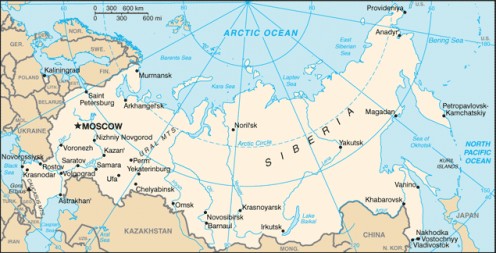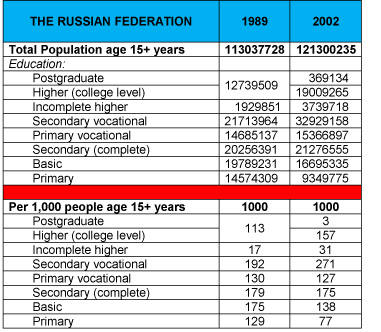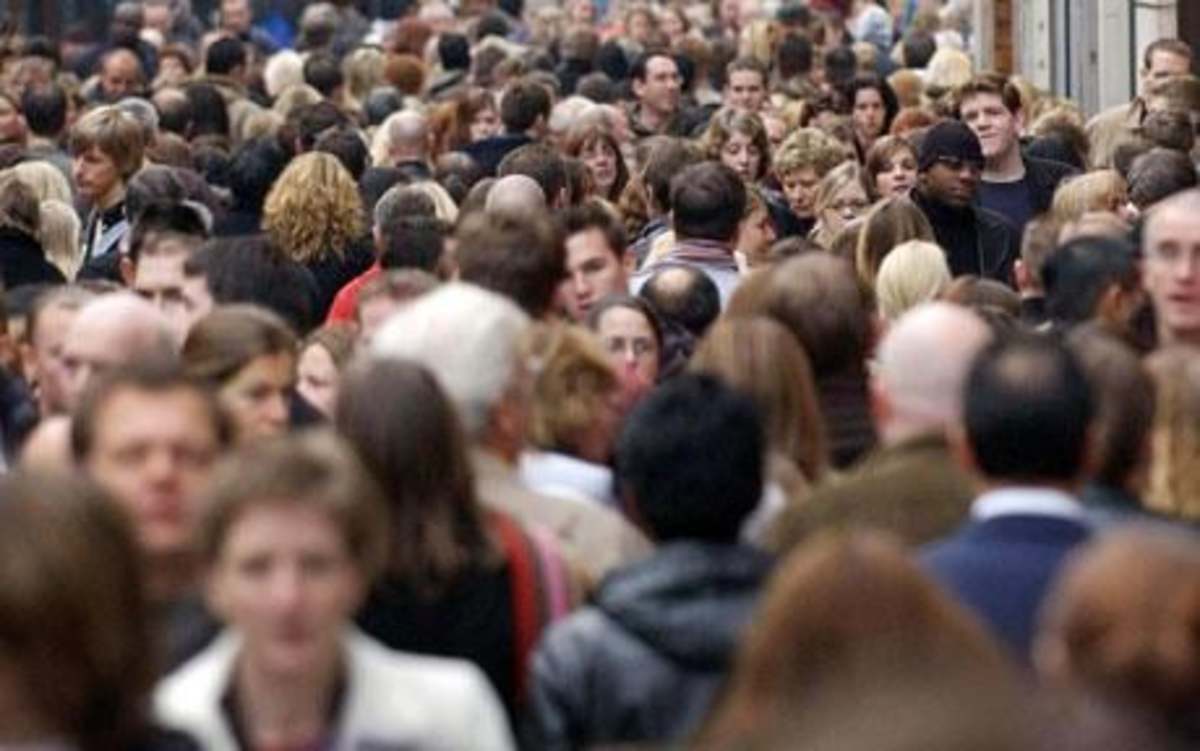World Overpopulation Crisis in Research Results
Results of Census2010 and World Statistics
The Daily Record tells us that despite the slowest decade (2000 - 2010) of population growth in the United States since the Great Depression, we still have the fastest-growing population of any industrialized nation.
The United States population count is the world's third most populous number in all of 2010, 2007, and 2005. However, the US population is aging and its birth rate declining, leading to an aging population on average.
In fact, Baby Boomers began turning 65 in 2011 and heavily draining the Social Security system. Members of that cohort that are receiving early retirement from Social Security are increasing the drain.
Still, this is not as acute a slow-down as in Japan, where young women in the late 1980s rebelled against marriage and childbearing in order to choose careers. This was big news globally, but the trend has continued to 2010.
Japan is becoming a nation of senior citizens more quickly than is the USA.In the same five-year time span 2005-10, Japan lost half a million people in deaths, moves to other nations, and a declining birth rate (see tables below).
One of the most striking changes in global populations from 2005 to 2010 is the decline in numbers within The Russian Federation, to the tune of 4,600,000 people lost.
Overpopulation: Must We Off Load to Mars?
Since AD 2000, increasing numbers of scientists counseled in the media that mankind needed to move off planet to Mars in order to prevent mass deaths due to lack of Earth resources and the ultimate extinction of humans.
This pleased the Mars Society that has been doing tireless work toward this end for some time, private space flight companies and related manufacturers, and perhaps President Barack Obama when he spoke about aiming for Mars and eliminating Lunar colonization plans during the early part of his 2009 - 2012 Presidential term.
The fact that potential lay in mining the asteroid field between Earth and Mars for mineral resources could create jobs for additional people. Senior Citizens were spoken of as potential recruits to travel permanently to Mars in order to found the first settlements.
This would provide them with useful work, excitement, and a place to off load themselves as part of an increasing and aging Earth population that was draining the national economy. Whether Martian Colonization is practical from a human health standpoint will be determined in future, likely by the early 2020s.
Top 10 Most Populous American States (US "Census2010")
State
| % Change in Population 2000 to 2010
|
|---|---|
1. California
| 10.0
|
2. Texas
| 20.6 (extreme increase)
|
3. New York
| 2.1
|
4. Florida
| 16.6 (large increase)
|
5. Illinois
| 3.3
|
6. Pennslvania
| 3.4
|
7. Ohio
| 1.6
|
8. Michigan
| - 0.6 (decline): The only US State to lose population.
|
9. Georgia
| 18.3 (major inclrease)
|
10.North Carolina - replaces NJ
| 18.5 (major Increase)
|
Data provided by the US Census Bureau.
America: US State Population Rank AD2005
- California 36,132,147 and about 40 Million in AD2010
- Texas 22,859,968
- New York 19,254,630
- Florida 17,789,864
- Illinois 12,763,371
- Pennsylvania 12,429,616
- Ohio 11,464,042
- Michigan 10,120,860
- Georgia 9,072,576
- New Jersey 8,717,925 -- Replaced by North Carolina by AD2010, possibly because of the influx of research, commercial and residential entities and populations around and in the Research Triangle.
Spotlight on California Population
Dan Walters of the Sacramento Bee in the state capital reminds us of population growth in the state from 22 Million in 1975 to approximately 40 Million (government opinions and counts differ, because of inclusion and exclusion of undocumented residents) in AD2010. This is about double in 35 years.
He tells us that after WWII, not only did the Baby Boom hit California, but other people moved in from other states to seek their respective fortunes. I think that immigration from Asia and the Pacific Islands added to California's population significantly as well.
It appears that Governor Jerry Brown (served 1975 to 1983) limited improvements in infrastructure during his terms. Then a mini baby boom and a wave of foreign immigration hit California, requiring more and better infrastructure. Governor again from 2011 to 2018; what will he do about infrastructure? -- Or about Education, Public Assistance, or Senior Services? What does the next governor do?
California has the largest US population, but also a larger share of related problems.
Mr. Walters has examined the figures and reports that state population growth has slowed markedly from the 1980s to about 1% percent a year currently, which still means 400,000 people a year. California has one of America's highest Birth Rates at 500,000 babies a year, or twice the Death Rate. The babies are largely of color, while the aging population is primarily Caucasian.
The over-65 population is to increase by 50+% by AD2020, while the babies are still born one a minute.
North Carolina is across the nation from California and increasing population at a higher rate, nearly double the percentage.
Big Three of Population: Northern Hemisphere Nations
National Populations 2010
- China 1,330,141,295
- India 1,173,108,0183
- USA 310,232,8634
- Indonesia 242,968,3425
- Brazil 201,103,3306
- Pakistan 177,276,5947
- Bangladesh 158,065,8418
- Nigeria 152,217,3419
- Russia 139,390,205 (Negative growth, -4.6 million)
- Japan 126,804,433 (Negative growth, -0.5 million)
National Populations 2005
- China 1,298,847, 624
- India 1,065,070, 607
- USA 293,027, 571
- Indonesia 238,452,952
- Brazil 184,101,109
- Pakistan 159,196, 336
- Bangledesh 141,340, 476
- Russia 143,974, 059
- Nigeria 125,750, 356
- Japan 127,333, 002

Countries With Negative Growth are Losing People
Although the population of Earth hit seven billion in 2011, some nations began losing population, including two in the Top 10: the Russian Federation and Japan.
Spotlight on the Russian Federation
The CIA World Factbook online lists the Russian Federation as the 9th most populous global country with an estimate in July 2010 of a population numbering 139,390,205.
Median Ages
Within the federation the median ages are interesting, all differing enough to be significant from one another:
- ALL: 38.5 years ; life expectancy 66.1
- Males: 35.3 years; life expectancy 59.5
- Females: 41.7 years; life expectancy 73.2 (much higher than for males)
Population Growth
- The population Growth Rate is negative at nearly -0.05% and the Birth Rate is low at only 176th among world nations, at 11.11 per 1,000 people.
- The Death Rate is much higher at 16.04 per 1,000. For every 2 babies born, about 3 people die.
Education
Even more interesting is education achieved, males averaging 14 years of schooling and women, 15 years of education.
Education Changes of Note in Russia
The table below represents the individuals that take the Worldwide Achievement Tests (age 15) and older persons.
- College graduates and postgraduate finishers have increased dramatically from 1989 to 2002, indicating an increased number of Professional Workers.
- Primary education has risen, probably in rural areas that have heretofore lacked adequate schools, and education numbers have risen dramatically among
- Secondary vocational completions, a number that indicates an increase in certified worker in skilled trades.
- Although the nation has lost 4,600,000 people, those remaining are better educated overall, therefore logically more productive to the economy.

Population of Japan
The CIA World Factbook reports that Japan experienced an economic slow-down beginning approximately 1990 and continuing to 2011 and ongoing. In the mid-1980s, news of cultural change in Japan arrived in American newspapers and magazines, even martial arts periodicals.
Japanese women in their 20s ans 30s were beginning to reject the notions of motherhood and marriage in favor of long-term careers. This trend has extended into the 2010s, resulting in a decreased Birth Rate and increased aging of the overall population (See "Causes of Divorce" in the links near the top of this page). In 2010, Japan took the Number 10 spot in the Top 10 Most Populous Countries and may fall of the list in the next census period.

Japanese Trends AD2010 to AD2020
Median Ages
- ALL: 44.6. Life expectancy is 82.2 years (5th highest in the world).
- Males: 42.9, expected to live to 78.9 years.
- Females: 46.5, expected to live to 85.7 years.
Population Growth
- The Japanese Birth Rate is 7.4 births per 1000 people, only 223rd highest of all countries in the world.
- At the same time, the higher Death Rate is 9.83 per 1000 individuals, the 61st highest in the world. This means that for every baby born, 2.4 people die, resulting in a decreasing population or negative Growth Rate of - 0.24% or about a quarter of a percent yearly.
- The Japanese population total is declining half as fast as that of Russia.
Education
- Most of Japan's population attends 15 years of schooling, expected per cultural norms.
- Japanese 15-year-olds score well annually on the yearly global achievement tests mentioned above.
Sources
- Information Please Almanac. www.infoplease.com/world/statistics/most-populous-countries.html#ixzz1ANqe8eGz Retrived May 15, 2011.
- National Geographic Blog: Volunteer for Mars. blog.nationalgeographic.org/2011/01/11/400_volunteer_for_one_way_mars_trip/ Retrieved May 27, 2011.
- US Census Bureau. Census2010.
- Walters, D. World Populations Changes. Sacramento Bee. http://www.sacbee.com/2011/01/09/3310408/dan-walters-population-changes.html Retrieved May 9, 2012
© 2011 Patty Inglish MS








